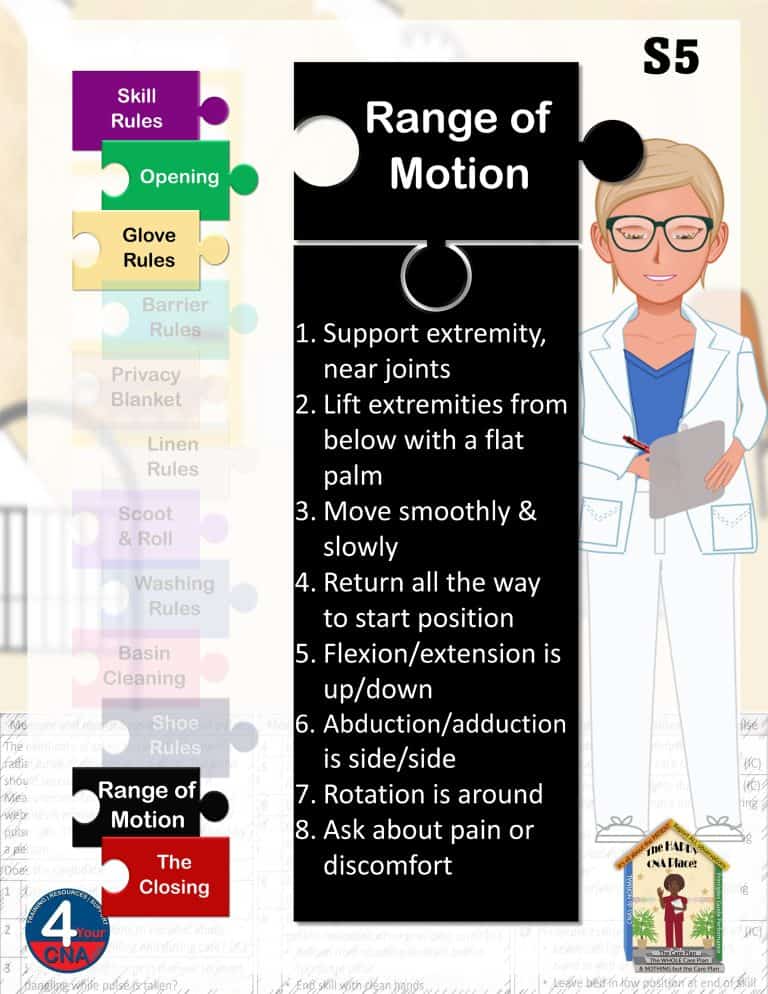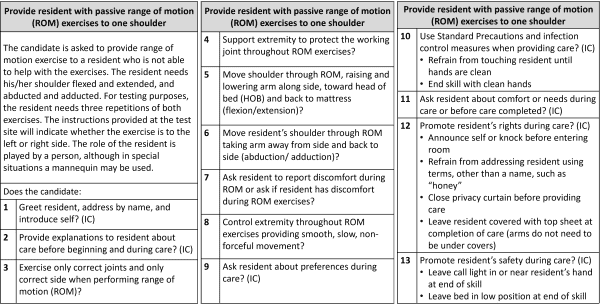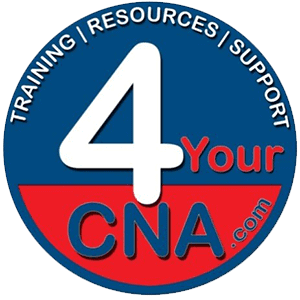Perform Passive Range of Motion to Shoulder
This video demonstrates how to perform passive range of motion (ROM) exercises on the shoulder—a fundamental skill in clinical practice. In healthcare, assessing and promoting ROM serves several vital purposes:
Restores and maintains joint mobility: ROM exercises prevent stiffness and maintain flexibility, especially important in patients recovering from shoulder injuries, surgery, or prolonged immobilization.
Facilitates pain reduction and healing: Gentle and controlled movement helps enhance blood circulation, reduce swelling, and improve tissue healing—central to rehabilitation and comfort.
Provides objective functional assessment: Clinicians measure ROM to establish baselines, set therapeutic goals, and monitor progress, guiding care plans effectively.
Supports safe patient care: Proper technique ensures patient safety—respecting pain thresholds, using supportive hand placement, and controlling movement to avoid joint strain or injury.
1. Preparation & Hand Hygiene
- Read and follow the Care Plan, the whole Care Plan, and nothing but the Care Plan.
- Knock and announce yourself before entering.
- Greet the Resident by name and introduce yourself.
- Explain the task to the Resident and ensure their comfort and consent.
- Close the Privacy Curtain
- Wash your hands thoroughly before beginning.
- Assess Glove Rules (Are Gloves required for this Resident?)
2. Positioning Resident
- Ensure Resident is lying flat in the center of the Bed.
- Describe movement to Resident
- Ask Resident to notify you of any pain or discomfort throughout.
- Stay vigilant for un-vocalized signs of pain throughout:
- Wincing
- Sharp Breaths
- Grunts
- Extend Resident’s arm to be exercised out to the side, supported by the bed.
3. Exercising the Resident
- Support Resident’s Arm from below at the joints.
- DO NOT “grab” Resident’s Arm from above.
- Slowly and smoothly raise Resident’s Arm in front of them, over their head, and then all the way back down to the starting position. (Flexion/Extension)
- Repeat two more times.
- Once complete, return Resident’s Arm to the starting position.
- Supporting Resident’s Arm at the joints, slowly and smoothly, swing their arm up to their side, above their head. (Adduction/Abduction)
- Similar to making a “Snow Angel”
- Slowly and Smoothly return Resident’s Arm to the starting position.
- Repeat two more times.
- Ask Resident about discomfort throughout.
4. Address Resident Comfort
- Ensure Resident is comfortable.
- Ask about Resident needs and preferences.
- Provide Resident with Call light.
- Open the Privacy curtain
- Ensure bed is in lowest position.
- Thoroughly wash your hands.
- Think about the Steps of your Skill. Make any corrections. Tell the evaluator your Skills is complete.
- Not reading and following the Care Plan, the whole Care Plan, and nothing but the Care Plan.
- Not describing Skill to the Resident
- Moving in a quick or forceful manner
- Grabbing Resident’s extremities from above.
- Not supporting Resident’s extremities at the joints.
- Not asking Resident about discomfort or pain throughout.
- Ignoring signs of Resident discomfort or pain throughout.
- Not following proper Resident Hygiene and Infection Control
- Not completing the correct number of Repetitions.
- Not completing the proper Range of Motion Exercise.
- Not Exercising the correct side of Resident.
- Not Exercising the correct Body part.
- Not providing Resident with Call Light.
- Not ensuring bed is left in the lowest position.


Join our FREE Classroom Livestream on Mondays & Wednesdays from 9am – 1pm (ET) on FLCNATraining.com!

